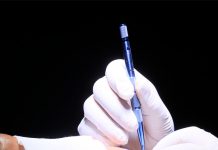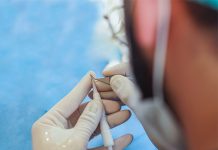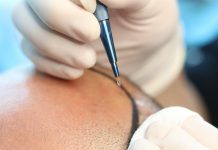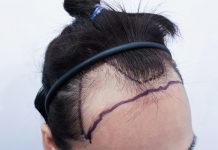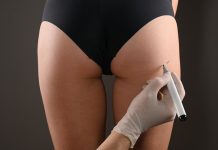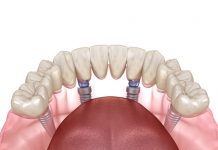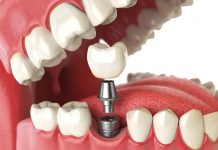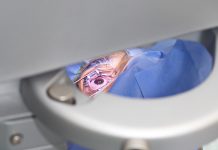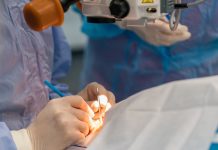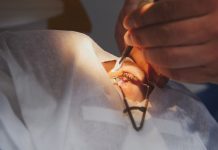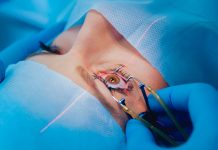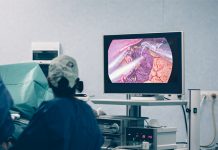Gynecomastia Surgery
Gynecomastia procedure in Turkey, its average cost, operational methods and everything you should know about the male boob removal surgery are explained.
What Is Gynecomastia?
Gynecomastia, also known as “man boobs” or alternatively “male boobs” is a condition which occurs due to the swelling and enlargement of the breast tissue in males. Fat man boobs might cause insecurities and socially avoidant behaviour patterns especially in younger males. Although there are more than one causes of gynecomastia, this condition can occur even in new-born infants. The best way to lose man boobs is gynecomastia surgery, during which male breast reduction takes place. Gynecomastia surgery cost is usually between £1,000 – £3,600.
How Does It Affect Men?
Men with this condition might experience lower self-esteem and self-worth due to society’s toxic body standards; they may think they are “feminine” or “not manly enough” and it might overwhelm them with great pressure, causing them to try everything to lose man boobs. As distressing as it sounds, getting rid of man boobs is not rocket science, and you can bid this excess tissue farewell with man boob reduction, which is also known as gynecomastia surgery.
Gynecomastia can affect one or both breasts. Patients may complain about feeling pain or tenderness around the breast tissue. Irrespective of the severity of their gynecomastia, one has to understand that their body is unique and harmonious in its very own shape. Having gynecomastia does not make someone a creep, a weirdo or an underdeveloped man. It is a condition as natural as having a nose, and doctors can modify breasts just like other body parts thanks to plastic surgery. If you are not happy the way you look and you have developed self-restrictions or excessive anxiety regarding your chest area, you might consider having a breast reduction.
What Causes Gynecomastia?
Gynecomastia is usually defined and caused due to the imbalance of two hormones in a man’s body: oestrogen and testosterone. Oestrogen promotes feminine traits, and breast growth is one of them. It causes breast tissue to get bigger. In contrast to oestrogen, though, testosterone is responsible for traits that are often associated with men, such as muscle mass and body hair. It overcomes the effect of oestrogen for men.
Unlike the general opinion, women are not solely of oestrogen and the real manly man doesn’t overflow with just testosterone. In fact, both of these sexes produce hormones that aren’t really associated with them, as well. Every woman produces a certain amount of testosterone whereas every man also produces some oestrogen. Gynecomastia occurs when a male’s oestrogen level is excessively high or isn’t in harmony with his testosterone levels.
Different Causes of Gynecomastia
A male can possibly develop gynecomastia in different stages of his life. These stages can be listed as below:
After Birth:
Prior to being born, infants inside their mothers’ wombs receive oestrogen from the mother; it is kind of a part of their development. Inevitably, it passes through the placenta from which the baby gets the nourishment it needs. Consequently, new-born males are still under the effect of this oestrogen, too. One in two of male babies have enlarged breasts. This type of gynecomastia usually diminishes within two or three weeks after birth.
During Puberty:
Hormone levels start to change drastically during one’s puberty. It usually starts between the ages of 12 to 14. Male teenagers might experience swollen or enlarged breasts due to this imbalance in hormones. Breast enlargement can be observed in many adolescent boys. Nevertheless, it goes away 6 months or two years following the start of puberty when their hormone levels start to reach a more stable condition.
Mid-life and Beyond:
Men usually experience gynecomastia at its best between the ages of 50 and 80. This stems from the fact that their testosterone levels start to decrease between those ages. Plus, men tend to have more body fat as they get older; this also causes oestrogen to be released from the fat tissues.
Gynecomastia, however, is not merely restricted to these stages. There are many external or internal factors that can trigger the formation of gynecomastia:
- Being obese: Gynecomastia is almost an obligatory outcome when it comes to obesity. In overweight individuals, levels of oestrogen raise due to their excessive fat tissue. As a result, their breast glands grow in an unavoidable way. Besides, being overweight puts extra fat tissue around the breasts, thus making them look larger. Exercise and dieting can improve the condition by making the patient losing fat; yet for some cases, this might not be enough, as well. The excess of fat tissue can be lost by dieting and exercising but enlarged breast glands need another solution other than these two.
Other Possible Causes
- Improper nutrition.
- Formation of tumours in the testicles or adrenal glands.
- Injury affecting the testicles.
- Liver disease.
- Hyperthyroidism.
- Hypoandrogenism.
- Hypogonadism.
- Kidney failure.
Certain illegal drugs such as anabolic steroids (used for increased athletic performance), marijuana, heroin or regular legal drugs containing oestrogens might also contribute to gynecomastia formation.
Common Symptoms of Gynecomastia You Can Observe in Yourself
As mentioned earlier, gynecomastia manifests itself by the swelling or enlargement of just one or both of the breasts. At the very beginning, you might notice a small lump under one or two of your breasts. This can even make you worry about breast cancer, which is not impossible for men. Breast cancer can affect a certain minority of males. However, gynecomastia does not always indicate cancer. If you are worried and full of anxiety, your doctor might run some tests for you so you can get it out of your mind. You might even notice an unevenly swelling, one breast becoming larger than the other.
How Is Gynecomastia Diagnosed?
If you suspect that you have gynecomastia, you may want to consider booking an appointment from your GP (General Practitioner). They can discuss your options regarding the treatment or if you need any treatment at all. First thing first, you will probably be examined to make sure that you have no hard lumps, oozing fluid or any dermatologic diseases, which may possibly be signs of breast cancer. If they decide that you need gynecomastia treatment, they might recommend having a breast reduction surgery or some medications to regulate your hormones in order to eliminate any imbalances.
You must always see a GP first if your breasts feel extremely painful or if you can observe a palpable lump. In some cases, the only thing that needs to be removed is the lump itself. The diagnosis itself is based mostly on your physical symptoms, breast examination, your medical history, medication reviews and other examinations.
What You Need to Know
- Breast pain and breast tenderness are the most common symptoms. A firm lump of fat tissue located beneath the nipple area is the most common thing that is observed during the examination process.
- Your doctor will also want to learn more about the legal or illegal medications you are currently using or you have recently used; they may also want to consider the supplements and various herbal products you might have metabolised.
- Your full medical history will also be evaluated.
- Blood or urine samples will be ordered with the intention of detecting any possible hormonal imbalances. Additionally, your doctor may also want a mammogram (viewing your breast through an X-ray) or biopsy (taking a small sample of breast tissue) to look for signs of cancer.
When to Consider Treatment for Gynecomastia
Having such a condition might interfere with the social life of individuals, especially of younger males. You should consider gynecomastia if you;
- Avoid removing your t-shirt in public places like the beach or the gym to abstain from swimming or exercising.
- Want to improve your body proportions and cannot stop yourself from thinking about your own body image (mostly in a negative way).
- Are going through severe psychological side effects such as anxiety, depression, eating disorders or suicidal thoughts because of your enlarged breasts.
- Wish to be more confident in social gatherings.
These reasons are more than enough to decide for treatment. Studies claim that gynecomastia can cause severe anxiety, depression, lower self-esteem and even eating disorders mostly in adolescent males. Your doctor might recommend you to see a mental health specialist to prevent any possible adverse outcome of those psychological problems.
Treatment Process of Gynecomastia Surgery
Gynecomastia usually gets better on its own without any treatment. Nevertheless, in some extreme or chronic cases, you may need treatment to get rid of breast enlargement. Your plan of treatment may show variance in accordance with your age, your overall health, the maximum possible time your condition may last for and how you react to certain drugs and substances. If you are an adolescent, it will most likely go away on its own within 6 months to 3 years.
It is highly recommended that you wait before applying for any procedure regarding your treatment. If you still experience gynecomastia after your puberty, then it is evident that there is another underlying problem. Although the root of this condition is not really known, you can still be treated with medications that are dedicated to regulate your hormones, thus preventing breast growth. Your doctor might initially refer you to an endocrinologist whose profession is to treat hormonal problems and their effect on your body.
In some other cases, you might be recommended to have surgery to take excess breast fat (liposuction) or extra breast gland tissue around your nipples (mastectomy). Surgery is only recommended in cases of severe pain, tenderness or psychological damage. In addition to those physical solutions, psychological support can also be recommended for adolescents and adults who find it distressing or triggering to cope with such a condition. Talking with and getting help from a therapist or from a counsellor might be of grand help.
What Makes You a Suitable Candidate for Gynecomastia Surgery?
There are some solid points to consider before deciding on gynecomastia surgery.
General Condition
- If your overall health is not under the effect of a serious chronic condition, you are very close to being a good candidate for this procedure.
- The elasticity of your skin matters greatly when it comes to the actual deed of surgery. Once your excess skin is removed during the gynecomastia, your doctor will need to use your remaining skin for adequate skin contraction. If your skin is in the lack of required elasticity for successful contraction, it is most likely that the gynecomastia surgery will not be successful too. If you are 50 or older; if you have been damaged by sun rays considerably; if you have stretch marks on your skin or have gone through gastric bypass surgery, your skin will undoubtedly lack the desired elasticity.
- Being within the range of your ideal weight will assist you greatly along your gynecomastia adventure. Even if you are overweight, the gynecomastia surgery will help to solve your problem. Yet the results will not possibly be like you expected and you will hardly notice some alterations that have been performed. That’s exactly why you should get within 30 to 40 pounds of your suggested weight prior to gynecomastia surgery.
Habits and Expectations
- You shouldn’t forget that you have to keep your expectations realistic. You must actually know what you want from this operation in order for it to fully reach its potential and satisfy you. It is better to have a positive outlook on life and enjoy your journey.
- It would be best if you cut off marijuana, steroids or alcoholic beverages entirely. If you cannot cut these off, you might at least try to consume them in moderation for some time. Nonetheless, you mustn’t forget that these add up to gynecomastia and forms the root of this condition.
How to Choose Your Surgeon
Choosing the right surgeon carries a great amount of importance if you have decided on having gynecomastia surgery. It is vital that you choose your surgeon by paying attention to his/her education, training and certification. He/she must be an experienced surgeon on the topic of gynecomastia and you should feel a certain level of comfort when talking to him/her. Your focus should be on finding a board-certified plastic surgeon located near your area.
You can conduct a research about them on their official social media accounts or in the Internet. You can try reading the comments about them or contacting their previous patients to hear about their experiences. After you determine your surgeon for sure, you are going to need to make an initial consultation appointment, which usually requires a certain cost due to the comprehensiveness of the consultation.
Initial Consultation Appointment
During your first appointment with your surgeon, you need to start discussing your cosmetic goals. Your surgeon will automatically evaluate you as a gynecomastia surgery applicant and he/she will make you sure that you know what you can expect from this procedure. Alternative or additional treatments might be considered in accordance with your goals and your medical condition. You should be prepared beforehand so as to discuss your full medical history. Your doctor might ask you questions as shown below:
- Are currently being treated for a medical condition? Do you have any chronic conditions or drug allergies?
- Have you ever had a surgery before?
- Are you using medications, vitamins or herbal supplements?
- Do you consume alcohol, smoke tobacco or use recreational drugs? Have you used any of them recently?
- Have you ever had any non-invasive cosmetic procedures?
- What do you realistically expect from gynecomastia surgery? Why do you want to undergo such a process? What is your biggest motivation for this?
Cosmetic Goals
After these questions, your surgeon will want to determine your cosmetic goals physically.
- He or she might take you in front of a mirror and ask you to point out the parts you would like to see changed.
- The staff in your doctor’s office may take photographs of your chest area. These photographs can be modified via computer software and they can make you see what your results will look like beforehand.
- Your overall health status will also be taken into consideration.
- Your doctor will examine the elasticity of your skin, which is utterly important for such a surgery.
- You will discuss the anaesthesia type that will be used during your gynecomastia surgery.
- You will discuss realistic outcomes and possible risks or complications.
Every human body is unique and has its own characteristics, so is yours. Your surgeon will most likely create a customised treatment plan for you. Your expectations, your hormonal balance, your overall health and your doctor’s experience will greatly affect the formation your treatment plan and your final outcome. The assigned doctor might also show you photos of the similar patients and their outcomes to understand your anticipations better.
Question Ideas to Ask Your Surgeon
You must take an active role in your gynecomastia surgery. You may consider using this list of questions to be more active during your consultation process:
- Am I a proper applicant for such a surgery?
- Are my expectations realistic?
- Can you show me some before-and-after photos of the procedure I have chosen?
- Will I have scars and, if yes, to what extent will they remain visible? Or where will they be located?
- Which kind of anaesthesia would be the best for me?
- What will be the cost of gynecomastia surgery?
- What sort of behaviour do you expect on my part to get the best results from gynecomastia surgery?
- How long will my recovery time last? What can I expect during this period? When can I presumably return to my routine activities and responsibilities?
- What are the possible risks and complications of this procedure?
- If any unexpected complication occurs, how will you handle it? What can be done to make it better?
- What if the cosmetic outcome I expect will not meet my anticipations? Are there any further options then?
How Is Gynecomastia Surgery Performed?
The aim of gynecomastia operation to restore the male breast to its supposed size, to define its contours, to correct any visible deformities of the breast, areola or the nipple. The gynecomastia operation involves these methods as a whole:
- Making an incision around the nipple.
- Removing extra fatty tissue with a surgical knife or by using liposuction; or they might use a combination of these mentioned techniques.
- Nipple reposition in cases of a lot of tissue removal.
- The gynecomastia surgery approximately takes 1.5 hours and you will most probably need to stay in hospital overnight. In circumstances of excessive fat deposits on breasts (pseudogynecomastia), liposuction might be the preferred method of surgery. However, if glandular breast tissues have become denser than the fatty tissues, liposuction is not the right method for you. You need to have those glandular tissues removed by another method. Your doctor’s choice of surgery will mostly depend on the quality and elasticity of your skin. Your skin redundancy matters critically. Younger patients have a greater profile of skin shrinkage than older patients.
Methods in Use
- The most preferred method is the intra-areolar incision, or in other words Webster Incision. This incision extends along the circumference of the bottom half of your areola, mostly in the pigmented portion. The length of this cut may show variance in line with your anatomy.
- In severe cases of gynecomastia, your doctor may need to perform skin resection and nipple transportation. Skin resection is defined by the surgical removal of a certain part of an organ or a bodily structure. Nipple transportation, on the other hand, means that your doctor will move your nipple and change its location to some extent.
- Recently, minimally invasive gynecomastia operations have gained popularity among patients and doctors due to its smaller scar scale. In the “pull through technique”, for instance, surgeons open a very small cut (roughly 5 millimetres) around the areolar edge. After applying some liposuction, the glandular breast tissue is pulled through this opening. The major benefit of gynecomastia surgery is the fact that it causes smaller incisions. This technique, however, is only used on carefully-selected patients.
- On the other hand, ultrasonic liposuction has also elevated the success rates of gynecomastia correction. When breast reduction surgery is assisted by liposuction, the blood supply you need declines. Nipple distortion and areola slough are also kept at minimum. Moreover, thanks to this technique, the risk of developing post-operative complications is fewer than open surgical procedures. Nevertheless, liposuction-assisted breast reduction does not work effectively for glandular gynecomastia cases. Fatty tissues and the glandular tissues are two different parts of your breast. Their tissues are different than one another. Hence, they must be assessed prior to surgery. Only a small number of patients are able to be treated with just liposuction.
Preparing for Gynecomastia Surgery
After everything is settled and you are determined to undergo this gynecomastia operation, you will be guided by your surgeon with pre-operation directives.
Overall Health Status
- If you are 45 or older or have any kind of heart disease, you will first need to have an EKG.
- You should be extra careful for and insistent on getting a medical clearance from your surgeon if you have heart disease, low blood values or any medical/chronic condition. Liposuction cannot be performed on you if your body is suffering from anaemia.
- If your doctor recommends losing weight, a certain weight goal or some changes regarding your lifestyle, you have to try your best to stay loyal to these instructions and to achieve them for your very own satisfaction. You will get the best results if you comply with the things your doctor asked you to apply.
Regular Medications and Habits
- Irrespective of the type of your gynecomastia surgery, be it breast reduction or some other kind of operation, hydration is one of the most crucial points before and after the surgery. You must stay hydrated to recover quickly and for safe consequences.
- You must avoid sunbathing two weeks before the gynecomastia surgery. Tanning your breasts will harden your skin and deprive it of the moisture it needs to remain within a certain range of elasticity. As a result, it drastically increases your chance of getting permanent scars due to poor recovery.
- You must quit smoking at least a month before your scheduled surgery. Nicotine is capable of interfering with your healing process. The same rule applies to all kinds of nicotine patches and products containing nicotine.
- You must stop taking any kind of medications or supplements that operate as blood thinners such as all aspirin-containing drugs, Ibuprofen, Motrin, Advil, vitamin E and herbal supplements like John’s Wort, green tea, ginkgo or garlic. Only one multivitamin a day will probably be okay.
In the Hospital
- You are responsible for making sure that your requested laboratory tests and results are submitted to your doctor.
- Gynecomastia treatment is sometimes conducted on an outpatient basis. Prior to your surgery, you must arrange for someone you trust like a family member or a close friend to drive you home after the gynecomastia surgery. You must also make sure that they will be able to stay with you for 24 hours following your gynecomastia surgery. If no one is there for you for such a task, then you must inform your doctor beforehand so he/she can make some arrangements for your after-care.
- You had better take one week off from work; you can extend this into two weeks if your job requires intensive labour.
- Your doctor will guide you for buying chest compression garments before surgery and you will need to wear it after the gynecomastia surgery. You have to bring them with you on the day of your surgery, too. You are going to wear them over a t-shirt for a specified amount of time.
Exercise and Self Care Routines
- Do not to go under heavy weights in the gym for several weeks once you have had your surgery.
- You should avoid waxing your chest and having your chest hair removed by such an action for at least two weeks before and one and a half months after the procedure.
- You must inform your doctor if you have developed an illness, cold or any type of skin infection around your chest area within the first week.
At Home
- During the first month following the surgery, you had better have comfortable or oversized t-shirts within an arm’s reach. They must be just comfortable and feel good for your chest.
- You must complete all of your chores prior to your surgery so they will not burden you during your recovery phase.
- Your toiletries must be on easy areas within an arm’s reach, to which you will not feel the need to extend your arms or lift anything heavy.
- You need to prepare some fun stuff to keep you occupied during recovery. You can prepare your books or movies beforehand.
- Your medications (over-the-counter antacids included) and plenty of fluids must be on your bedside. You will need them most; especially the water to keep you hydrated enough.
- You must also consider filling your fridge with easily prepared foods and snacks.
What Will Happen on the Day of Gynecomastia Surgery?
Gynecomastia surgeries usually take one or two hours. Then again, depending on your condition and your anatomy, it may last longer than expected. Your surgeon will give you certain medications for your own comfort during the surgical procedure. General anaesthesia is the most preferred type of anaesthesia for gynecomastia. Yet your doctor might recommend local sedation (local anaesthesia) or intravenous sedation if they find it necessary.
Right after your surgery, you will be in another room where the staff is monitoring your condition lest any unexpected occurrence should suddenly manifest. It would be your best choice to wear loose t-shirts and sweatpants. You can prefer top pieces that open in front since it will provide convenience. You had better check your compression garment and how it fits on your body in advance.
Post-Operative Care and Recovery
Your doctor will inform you on the subject of returning to your routine activities and obligations. He/she will communicate to you how long it will roughly be before you are going to be able to perform these routine activities. You and the caregiver you’ve chosen will be given instructions on your post-operative care. It will be mostly about these aspects:
- Drains (if you have any on you that have been placed).
- Symptoms you will likely go through.
- Possible complications and how to detect them (if they occur).
What to Expect Immediately After Your Surgery?
After the gynecomastia surgery, you can expect to be bandaged in all probability. You will be wearing your compression garment and, additionally, you might find a surgical drain that is placed on you. You may feel a certain degree of pain when your anaesthesia wears off. If this pain you feel keeps bothering you more than expected, you must contact your physician. You are going to experience redness and swelling in your chest area, as well. You can always contact your doctor and learn whether these signs are normal or not.
The first three days after surgery carries extreme importance in regard to recovery. You must rest at home, yet not always in your bed. You can sit and watch TV, have your meals by going to the kitchen and pass your time in the living room as well as moving your waist and elbows to some extent, yet you must avoid forceful movements that will work the shoulders during your first days.
Nevertheless, you may perform lateral movements but you must not lift your arms vertically up and down. You can consult with your plastic surgeon for detailed information.
Recovery Phase After Gynecomastia
Your recovery time will depend on the severity of your gynecomastia and the procedure that have been performed on your chest. Nonetheless, in average, most of the patients are treated with liposuction and breast gland tissue removal combined. Nearly all of those patients are able to go back to their routine activities and to work after a week. This procedure generally has a gentle profile of recovery. It is crucial that you follow your doctor’s advice and instructions after surgery. He/she will inform you about everything you should pay attention for from your compression garment to the general care of your drains. Here is a list of things you should pay attention to:
Follow-up Visits and Medications
- Your follow up visit will probably take place within the first week of your surgery, presumably on the fifth or seventh day. Your doctor will also take off your stitches and the drain.
- The total time you need to wear your compression garment will depend on your doctor’s consideration.
- You will most likely be able to be back at work after 7-10 days.
- Your pain tolerance determines your recovery phase. Most of the patients experience mild to moderate pain. If you go through an intensive liposuction, the soreness you feel on your chest might feel like the soreness you experience after a hard work out. Your doctor may provide you with a painkiller medicine.
- You may need to apply Neosporin or ointments such as antibiotics to the wound.
Things to Avoid
- You should abstain from strenuous exercise during the first two or three weeks for maximum healing.
- Under all circumstances, you should avoid sunbathing or tanning for nearly 1.5 months. After this period bruises and swellings usually recede. Sun rays might result in permanent discolouration and persistent swelling. Your scars might appear more noticeable later.
Physical Outcomes During Recovery
- You may find that your sensation around the operated wound is lesser than usual. This is a normal thing for many surgeries and the sensation comes back after a year.
- Your entire areola might shrink and it is completely normal. This generally occurs when considerable amounts of glandular breast tissue are taken out.
- Swelling and bruising are common postoperative outcomes. They can occur in different intensities, gradually increasing over the first 3-4 days, and they usually diminish in 2-3 weeks.
- The swelling disappears nearly after three weeks and after that period you may see your final results. You just need to be patient.
Possible Risks and Complications of Gynecomastia
Breast reduction can rarely result in problems such as:
- Thick, noticeable scars.
- Uneven breasts or nipples.
- Problems with healing of the wounds.
- Loss of sensation around the nipples.
- Haematoma (bleeding inside the tissue): Usually happens after the first 24 hours.
Also, in every operation there is a small risk of:
- Bleeding excessively.
- Infection.
- Being allergic to the anaesthetic substance.
- Blood clot formation in vital veins.
Your surgeon will inform you about these risks and how to treat them lest they should occur.
Am I Suitable Applicant for Breast Reduction Surgery?
If you are healthy and do not have any additional serious health problems, then this makes you a good candidate. Yet, in cases of hormonal gynecomastia, hormonal treatment should come first. Surgery cannot treat such a condition in the long term. That’s why you should always consult to your doctor first.
What Are My Options Other Than Gynecomastia Surgery?
In cases of pseudogynecomastia (enlargement of the breast size due to the excess fatty tissue), you can be treated with only diet and exercise. However, if the problem is originating from your glandular breast tissues, then you have to go under the knife to have gynecomastia surgery, which usually comes with liposuction and breast reduction methods. Your hormones should also be in balance before the surgery if your doctor finds it necessary.
What Will My Scars Look Like?
This might vary in accordance with the amount of breast tissue you have and your skin elasticity. The larger the breast, the larger the scars; but usually people are rather happy with their post-operative results. Your surgeon will try to hide big scars under the crease.
How Can You Sum Up the Pros and Cons of Gynecomastia Surgery?
These are the most common pros and cons: Pros:
- You’ll feel more confident in exhibiting your chest, clothed or unclothed.
- Your self-esteem will increase.
- You can delight in your everlasting results.
Cons:
- Scars might cause you to be more self-conscious.
- You might be disappointed with your results.
- If you gain weight after the gynecomastia operation, your results will not show explicitly.
If you wish to learn about pros and cons that are unique to your case, you must consult with your plastic surgeon.
Is It Available on the NHS?
It is not generally available. You will probably need to pay for all parts of gynecomastia surgery. However, in some very rare cases, NHS might cover the surgery. Here is a list of the situations:
- Having gynecomastia for a long time.
- Resistant gynecomastia not responding to any other treatments.
- Gynecomastia causing excessive pain and stress.
How Much Does It Gynecomastia Surgery Cost?
The cost of breast reduction alternates between £3500 and £5500 in the UK. In Turkey, this cost might be between £1,000 – £3,600 Turkish Liras.
What Is the Age Limit?
Professionals recommend you to wait until you are 18 years old. You had better wait until your puberty passes. Hormonal fluctuations occur during this phase and your gynecomastia might resolve after this period.
Which Type of Anaesthesia Will They Use on Me?
Your surgeon will decide that in relation to your overall health and pain tolerance. Local, general or intravenous anaesthesia might be applied.
What Causes Gynecomastia?
This condition might occur due to several factors like genetic inheritance, hormonal imbalances, and obesity. Prolonged use of some medications and certain diseases might also result in gynecomastia.
When Does Gynecomastia Occur?
Males can experience gynecomastia in any age. This is because gynecomastia has many different reasons regarding different age groups.
How Long Will My Results Last?
The result is permanent unless you decide to undergo another surgery or gain weight. If you used to have anabolic steroids or medications, further use might again lead to gynecomastia. Do not hesitate to show up in your surgeon’s office if you notice any changes. You need to show up for post-operative evaluations at prearranged times.


